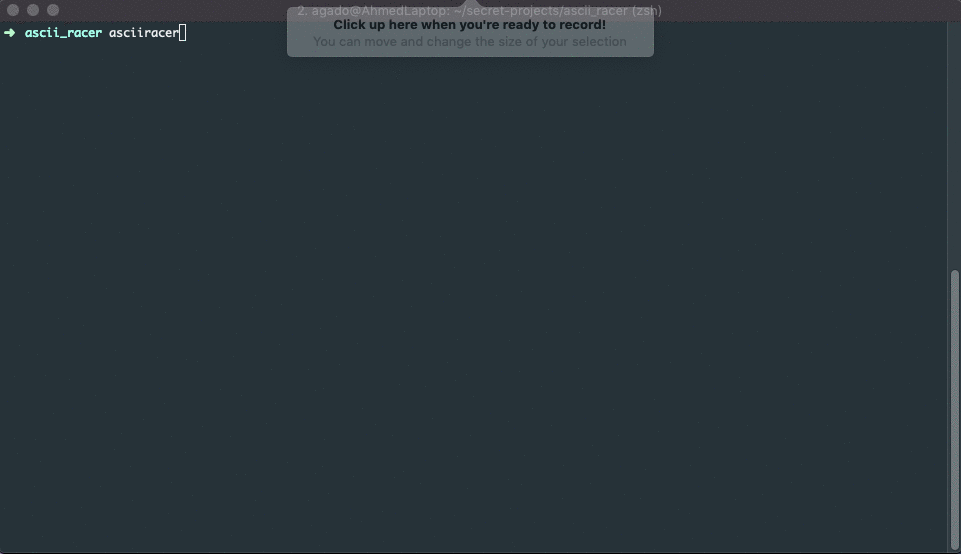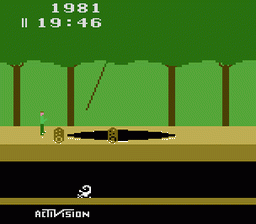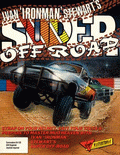131 private links
Command line games are fast, typically bug-free, and can be a lot of fun to play; especially when cruising through some of the most awesome retro games in history.
Visual scripting framework for python.
A racing game that runs in Terminal.

Kayaking & trekking in the beautiful Valsesia
Lode Runner Web Game (free online game), a html remake of Lode runner.
Racetrack is a paper and pencil game that simulates a car race, played by two or more players. The game is played on a squared sheet of paper, with a pencil line tracking each car's movement. The rules for moving represent a car with a certain inertia and physical limits on traction, and the resulting line is reminiscent of how real racing cars move. The game requires players to slow down before bends in the track, and requires some foresight and planning for successful play. The game is popular as an educational tool teaching vectors.
It was one of my favourite games when I was young.
Image source: Wikipedia.
RetroGames.cz deals with archiving and online emulation of old games for operating system MS-DOS and popular game consoles Atari 2600, Atari 7800, Nintento Entertainment System (NES), Super Nintendo Entertainment System (SNES), Game Boy (GB), Game Gear (GG), Sega SG-1000, Sega Master System (SMS), Sega Mega Drive (Genesis) and Nintendo 64.
Today our database contains 1239 different games from the eighties and nineties. 297 of them are available in two or more versions. Together we host 1758 online games and we are still adding new ones. All games are emulated in Flash, in Java or by JavaScript and with a few exceptions you probably do not distinguish them from the original versions. As a bonus we offer download of 1046 original game manuals in pdf format. At RetroGames.cz can be found such legends as Donkey Kong, Super Mario, Sonic, Pac-Man, Galaxian, Prince of Persia, Pitfall and many others. Anyway, if you love old games as much as the authors of this website, you're on the right place.
Have fun ;-)

From Wikipedia, the free encyclopedia:
Ivan 'Ironman' Stewart's Super Off Road is an arcade video game released in 1989 by Leland Corporation. The game was endorsed by professional off road racer Ivan Stewart. Virgin Games produced several home versions in 1990. In 1991, an NES version was later released by Leland's Tradewest subsidiary followed by versions for most major home formats, including NES, Sega Genesis, SNES, Amiga and MS-DOS.
In the game, up to three players (four in the NES version through use of either the NES Satellite or NES Four Score) compete against each other or the computer in racing around several top-view indoor off-road truck tracks of increasing difficulty. There are eight different tracks (twelve in the SMS version and sixteen in the SNES) and 99 races altogether. All races are raced more than once. First place results earn the player points to continue in the championship and money with which to upgrade their truck or buy more nitro. The goal is to reach the end of the season with the most money earned. Continues are available but whereas players can get extra money in the arcade version, in the home versions, the player's money is reset to zero. This is one of the first games where the player could upgrade his or her vehicle by earning points or money (although in Atari Games' Sprint series, one could upgrade their racer using wrenches), a system that is used in many racing games today.
In the original arcade game, the red, blue and yellow CPU trucks were 'driven' by 'Madman' Sam Powell, 'Hurricane' Earl Stratton and 'Jammin'' John Morgan, respectively. The names were taken from the development staff: Sam composed the music, and Earl and John were two of the software programmers. The Track Pack added 'Steamin'' Steve High, and 'Hot Rod' John Rowe, representing graphics and project direction, respectively. By using these names, this meant that further licensing deals were not required.

We venture into the dark, fascinating, and often misunderstood world of the Defense Department's code word and nickname generating processes.
Negli ultimi anni lo sviluppo di web API si è notevolmente incrementato a seguito della diffusione di client etereogenei e di nuove tecnologie: PC desktop, dispositivi mobili come cellulari e tablet, IOT (Internet of Things), Big Data, usano tutti interfacce web based per connettere e aggregare componenti e dati distribuiti al fine di creare sempre nuove soluzioni/servizi per qualsisi tipo di business globale. E’ nata per questo la necessità di creare dei sistemi di backend “neutrali” che forniscono dati in maniera “grezza” (tipicamente nel formato JSON o XML) che poi vengono utilizzati opportunamente sulle varie tipologie di dispositivi. Il modello adottato per la progettazione delle API è l ‘ormai conslidato REST.
In breve, questo modello consente di strutturare le API in risorse logiche su cui si opera mediante il protocollo HTPP usando le operazioni standard che quest’ultimo ci mette a disposizione, quindi: GET, POST, PUT e DELETE.
Esula da questo articolo l’approfondire il modello REST; fornirò alla fine un elenco di risorse utili per chi volesse approfondire l’argomento. Qui invece verrano descritte 10 best pactices per progettare/sviluppare una API in maniera chiara e pulita. L'utilizzo di metodologie e convenzioni chiare e predefinite consente meglio di condividere le informazioni tra sviluppatori, architetti e designer al fine di migliorare tutto il ciclo di implementazione di una web API.
Ma vediamo l’elenco delle 10 best practices:
Indice
- Usare Nomi e non Verbi
- Usare i Nomi al plurale
- GET e parametri di query non dovrebbero alterare lo stato
- Usa le sub-resources per descrivere le relazioni
- Usa gli header HTTP per definire i formati di serializzazione dei dati
- Use HATEOAS
- Implementa operazioni di filtraggio, ordinamento, selezione di specifici campi e paginazione per le collection: Filtraggio, Ordinamento, Selezione di campi, Paginazione
- Versiona la tua API
- Gestisci gli errori usando i codici di stato HTTP: Usa il payload dell’errore
- Consenti l’override dei metodi HTTP
Paged Out! is a new experimental (one article == one page) free magazine about programming (especially programming tricks!), hacking, security hacking, retro computers, modern computers, electronics, demoscene, and other similar topics.
It's made by the community for the community - the project is led by Gynvael Coldwind with multiple folks helping. And it's not-for-profit (though in time we hope it will be self-sustained) - this means that the issues will always be free to download, share and print.
Overview This article is written from a programmer’s perspective, where a monad is a software engineering pattern. Like other patterns, you may have already used it without knowing it was the monad pattern. There is still value in studying such patterns, because then you can use it more fluidly. There...
peco is a CLI utility that filters text interactively. The tool is written in the Go programming language. It's free and open source software.
Frustrated by programming language shortcomings, Guido van Rossum created Python. With the language now used by millions, Nick Heath talks to van Rossum about Python's past and explores what's next.
"La cosa migliore da fare quando si è tristi", replicò Merlino, cominciando a soffiare e sbuffare, "è imparare qualcosa. È l'unica cosa che non fallisce mai. Puoi essere invecchiato, con il tuo corpo tremolante e indebolito, puoi passare notti insonni ad ascoltare la malattia che prende le tue vene, puoi perdere il tuo solo amore, puoi vedere il mondo attorno a te devastato da lunatici maligni, o sapere che il tuo onore è calpestato nelle fogne delle menti più vili. C'è solo una cosa che tu possa fare per questo: imparare. Impara perché il mondo si muove, e cosa lo muove. Questa è l'unica cosa di cui la mente non si stancherà mai, non si alienerà mai, non ne sarà mai torturata, né spaventata o intimidita, né sognerà mai di pentirsene. Imparare è l'unica cosa per te. Guarda quante cose ci sono da imparare.
(Mago Merlino,The once and future king, T. H. White)
"They're all going to dump lidar," Musk said about self-driving rivals in April.
A Machine Learning System for Data Enrichment.
Why break into a company’s network when you can just walk right in — literally? Gone could be the days of having to find a zero-day vulnerability in a target’s website, or having to scramble for breached usernames and passwords to break through a company’s login pages. And certain…
Darwin Mail - Inbox evolved: reach new levels of productivity.
As used to author Heaven's Vault, 80 Days and Sorcery!: produce interactive scripts by writing in pure-text with ink markup.
